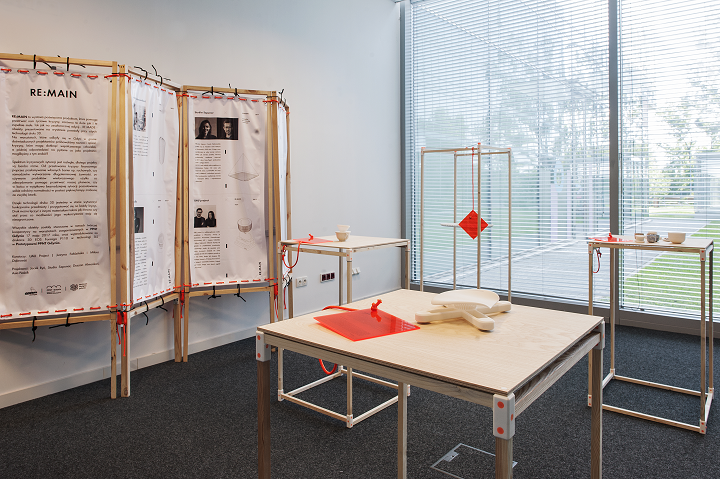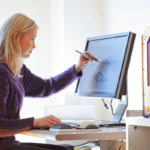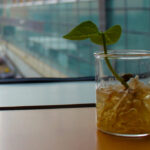

If you run into a crisis situation, the Pomeranian Science and Technology Park (PPNT for its Polish name, Pomorski Park Naukowo Technologiczny) wants you to turn to 3D printing technology to find a solution. The mission of PPNT, located in the city of Gdynia on the southern coast of the Baltic Sea, is to develop a knowledge economy by creating strong links between business and science, in order to foster an open environment of partnership and cooperation. PPNT has been working on a unique project called RE:MAIN, which is a set of 3D printed items resulting from several workshops in Gdynia.
PPNT writes, “Sometimes the circumstances force us to go beyond the established schemes. It is due to problems – both the known and the unknown – that we need to use solutions which we have not used before. How can we cope with such crises? This question became the stimulus for the creation of RE:MAIN products. The use of 3D printing has allowed innovation to help people change their everyday lives.”
During the workshops, experienced designers worked to find new design solutions for problems of varying size and severity, from overcoming mobility barriers and getting through financial issues to producing their own long-lasting food. The question put forth to these designers, which resulted in a diverse set of solutions, was this: what could they do to assist in dealing with the given unpredictable situations? The five RE:MAIN items were 3D printed in PPNT prototyping facilities, and recently presented at the Gdynia Design Days festival.
“The creators decided that this untypical way of production allows them to create products which would help them survive in difficult situations and introduce innovations which can make our lives easier. The designers have created reusable products to also lessen the burden on our planet,” PPNT wrote.
Miłosz Dąbrowski and Justyna Fałdzińska, the founders of Polish multidisciplinary design studio UAU Project, whose work we’ve admired before, were the curators of the RE:MAIN project. UAU Project is interested in exploring and experimenting with consumer-oriented 3D printing for making home products, which fits right in with their RE:MAIN project, titled MYOC.
The project description reads, “How to deal with crises especially when we lack the tools? It is useful to use a reusable product, such as the MYOC – Make Your Own Ceramic.”
MYOC is a set for producing your own self-decorating small objects, like stands, brooches, and bowls, out of ceramic and porcelain. Then, you can sell the products to survive a personal financial crisis.
The 3D printable MYOC molds don’t need to be dried like plaster molds, and can be produced in any quantity. Items can be burned in a ceramic oven, and each object can have its own character by adding different glazes and paint colors.
Keeping with home products, Duszan Almonkari with Studio Ganszyniec designed a Lampion (Lantern) project, as a simple flashlight is needed for both small crises, like a temporary power outage, and larger ones, like a zombie apocalypse. Almonkari believes that no one, especially under unpleasant circumstances, should have to give up the light they rely on, so he designed a 3D printable lantern/flashlight combination.

“The art of survival requires taking care of mental comfort as well as the satisfaction of mundane needs. The lantern with a flashlight inside it transforms the light from a sharp spotlight into a pleasantly softened light. The form of the lamp is subordinated to the rigor of simplicity and harmony instead of the language of survival equipment.”
Another item that I’m sure can be found in most homes is some type of coffee maker, whether you’re a Keurig fan like me, prefer a French Press like my husband, or enjoy good old Mr. Coffee. While being without coffee is obviously not a major crisis, if you’re in an 8 AM meeting without your usual cup of caffeine juice, it can certainly feel like one.
The Kapka (Drip) design by Asia Piaścik of DINGFLUX is a way to brew coffee without having to use disposable paper filters; this helps solve the issue of reduced natural resources.
Nikodem Szpunar and Kamila Niedzwiedzka with Studio Spuznar created a fruit and vegetable dryer as their RE:MAIN project, in order to bring attention to the process of food production.
“Provisions and self-prepared preserved foods, but also healthy eating habits disappear in a society which gradually moves into cities and uses ready-made products of unknown origins. Drying foods has been known for centuries and is the most popular way of preserving foods. This is a long-term process but it does not require much effort as opposed to working with crops. We want to restore the value of food which has been significantly reduced by mass production.”
The 3D printable dryer can be hung out the window on a sunny day, or placed on a radiator if it’s cold out. It uses the minimum amount of 3D printing material and doesn’t consume any extra energy; additionally, the dryer occupies only a small amount of print space, while offering a large surface area for drying fruits and vegetables.
The last RE:MAIN project is by Jacek Ryń. The L2 Project is a cradle cart device, which was designed to help children with motor dysfunction or neurological diseases such as spina bifida and cerebral palsy to crawl on all fours, as overcoming barriers such as this could be considered a crisis situation. The material used to build the L2 is lightweight but strong, and using 3D technology to design and print it “opens new possibilities in the field of designing rehabilitation devices.”
“Thanks to SLS printing and its geometry, it was possible to achieve a variety of material functionality in one part, such as springy support and rigid construction. This allowed us to reduce the amount of parts needed to produce L2.”
3D printing made it possible to adjust the geometry of the prototype so it fits the precise needs of an individual patient.
The moral of the story here – if you run into a crisis situation, 3D printing technology may offer you a way out of it. Discuss in the PPNT forum at 3DPB.com.
[Images: PPNT]
If you're looking to get architectural 3D animation in the USA, our service provides an exceptional way to bring your architectural concepts to life through dynamic, immersive visuals. Through our platform, you can easily request high-quality 3D animations that showcase your designs in motion, offering a detailed view of your project from multiple angles and perspectives. Whether it's for a real estate development, a commercial building, or an urban planning project, our expert team ensures that every detail is captured in a visually compelling animation.
Through our website, you can seamlessly get architectural 3D animation tailored to your project’s specific needs. With our help, you can offer potential clients or investors an engaging experience that goes beyond static images. By integrating CGI animations with real-world settings, lighting, and textures, our team creates a lifelike experience that allows your audience to interact with your project as though it were already built. This service is perfect for presenting complex designs in a clear, visually attractive way that stands out in the competitive architectural market.




